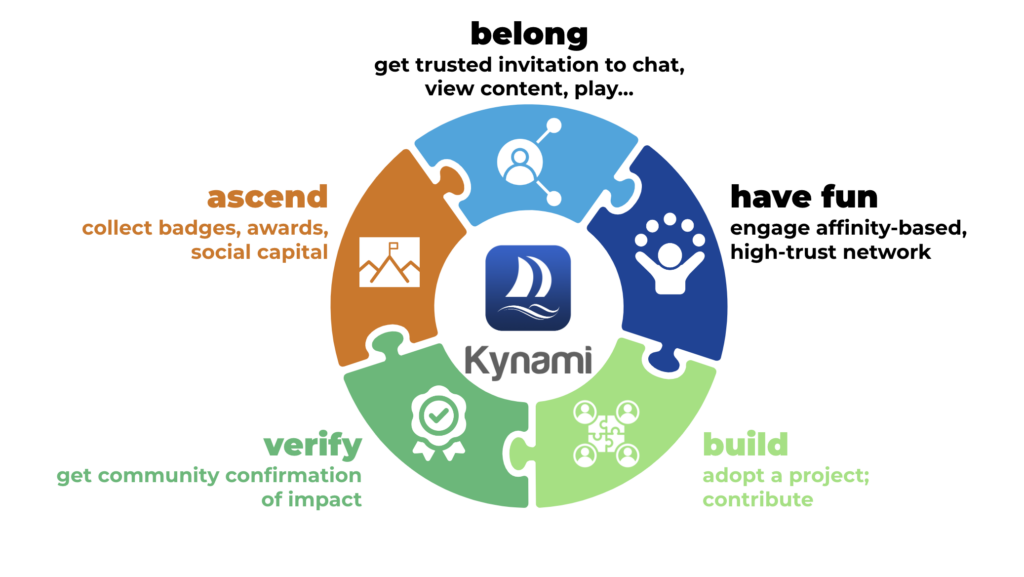Re-engaging America in Civic Society: Part III
Turning Weapons of Mass Distraction into Beacons for Community Engagement
We know that civil engagement is declining. We also know that social media and the plethora of apps on our smartphones constantly distract us from physical engagement with others and draw us into a virtual space that reinforce existing biases, polarize, and fracture social fabrics.
Smartphones and what they bring with them are a fact of life. They cannot be wished away. Therefore, the right question to ask is how we can use these very weapons of mass distraction and use them as a means to beckon people to engage with their communities.
Let’s lay out a few psychological facts. We, humans, are social beings. There is another person behind most emotions that we feel, decisions that we make, and actions that we commit. In essence, it is others that create meaning and motivation for us. Unless one is broken and psychopathic, others’ opinions matter. As such, social standing is an important reason for the way we behave and how we feel about ourselves. It is no surprise that social media platforms are depending on others’ validations to drive engagement for the user.
The question is how our psychology is tapped into, and to what ends our social proclivities are exploited. Social media business models are fueled by advertising dollars. In order to serve ads, these platforms need to drive engagement. To drive engagement, they tap into the innate need of wanting to be popular, liked, and acknowledged. And to deliver the “right” experience for their users, they bundle them into balkanized echo chambers, regardless of the real, physical social harms, isolation, and distraction they produce. In essence, they sell harmful and addictive products in pursuit of dollars, much as the tobacco industry does. For this reason, it is appropriate to label them as “weapons of mass distraction.”
The question is how we can leverage the same aspects of human psychology as a tool for re-engagement in civil society. The technologies and tools are already invented; hence, the question is how we can use them as a force of good.
One of my daughters is keen on fighting animal cruelty. Despite being seemingly glued to her smartphone, she learns about volunteer opportunities through word-of-mouth at her school. She then goes to a website to sign up. After the event, she comes home gleaming with energy feeling good about what she has done, but that is the end of her experience. Sometimes, she donates via PayPal or with cash. The next engagement is a repetition of the same process. Unfortunately, she has no insight into the longitudinal impact of her efforts, and has no real connection to the local community fighting against animal cruelty other than a few school friends.
It would be better if she plugged into the local animal welfare community through her phone, where she would get notifications for events, sign up, “adopt” her favorite pets, keep tabs of them over their lifetime, and tabulate her contributions over time. If she finds another like-minded peer who also cares about the same issues, she could invite that person to the community and get them plugged in. As a bonus, they could play competitive, thematically-relevant games to further drive interest and engagement. Donations could also be transacted through her smartphone either as a single payment or on a subscription basis. Finally, the results could be verified through photographic or other documentation, the impact of which could be used to build a social profile to give the user the bona fides that she actually cares and works about the cause.
The use case above kills many birds with one stone (pardon the pun). In one fell swoop, we have engaged the youth, relegated the engagement problem to users, and leveraged the properties of the smartphone for seamless donation processing. The same process applies to any civil engagement to engage the youth and make the use of donations far more efficient than what is possible today.

Let’s generalize my daughter’s use case, namely using the smartphone’s capabilities to (1) invite people to the cause; (2) engage them; (3) build and contribute to various projects; (4) verify the results and benefits; and (5) use the outcome personally for social ascension, similar the the way that LinkedIn builds professional profiles. By doing so, we see that this approach is applicable for engagement in any civil society activity, whether it is animal welfare, environmental concerns, educational outreach, et al.
Why This Matters
In Part I of this blog series, I started with “one key aspect that makes [America] unique is the role of the civil society” because “they engage in advocacy and offer alternative policies for government, the private sector, and other institutions. They deliver services, especially to the poor and underserved. They defend citizen rights and work to change and uphold social norms and behaviors … And most importantly, civil society brings people out of their social bubbles into a common flat setting, creating interpersonal interactions to build a stronger social fabric.”
Social trends unleashed by weapons of mass distraction are eroding civil society. Volunteers and donors are aging out and participation rates are dropping, leading civil society to spend over a third of its time and resources to attract new resources. This is wrong and wasteful on many levels.
It is time to reverse the harms of social media and re-engage America in civil society. Luckily, the same technologies and methods that social media have developed can be used as a force for the good.
There is a beacon of hope. At Kynami, our mission is to rebuild the civil society in America. Come and join us.
In part I, I described the current state of the American civil society.

